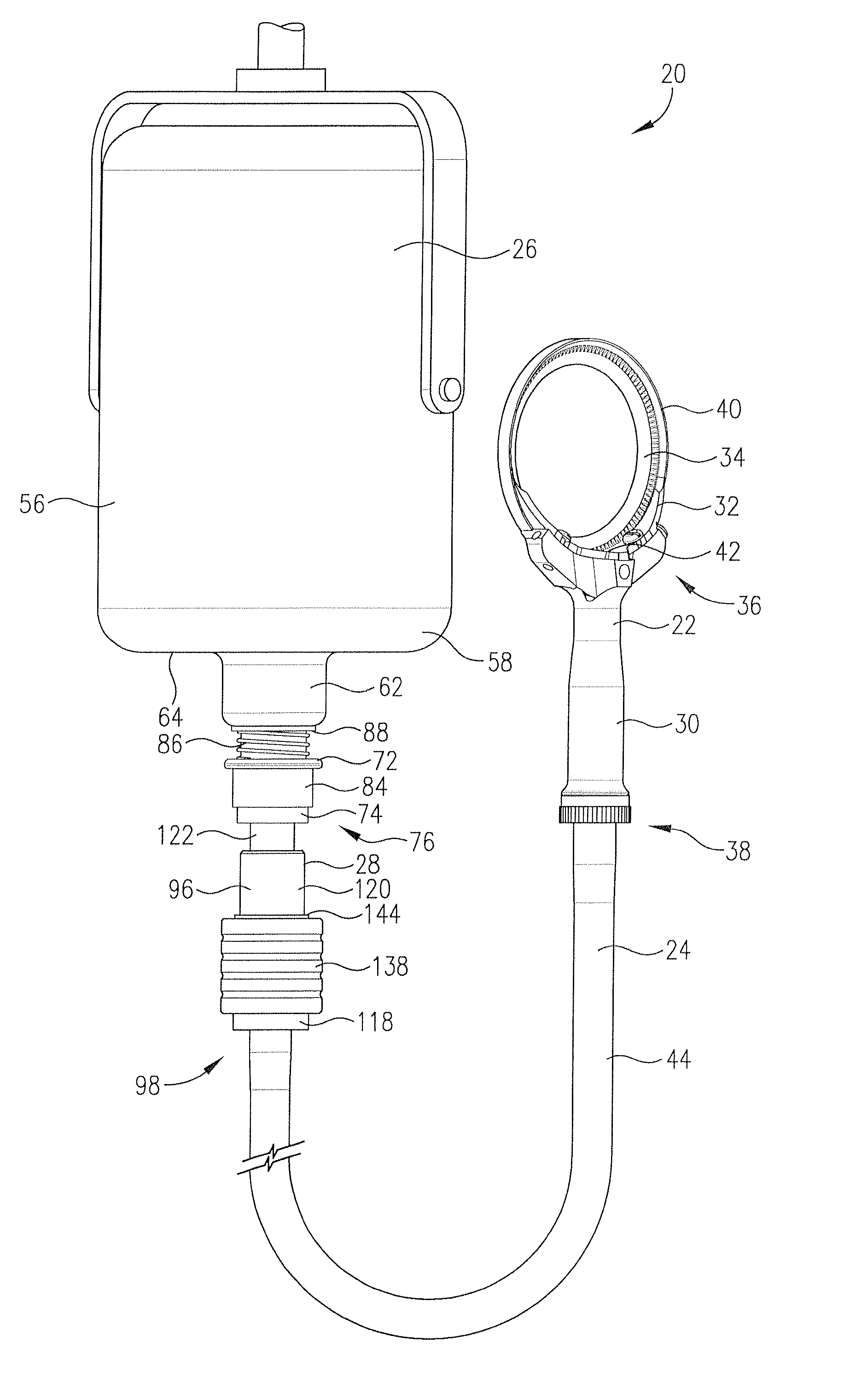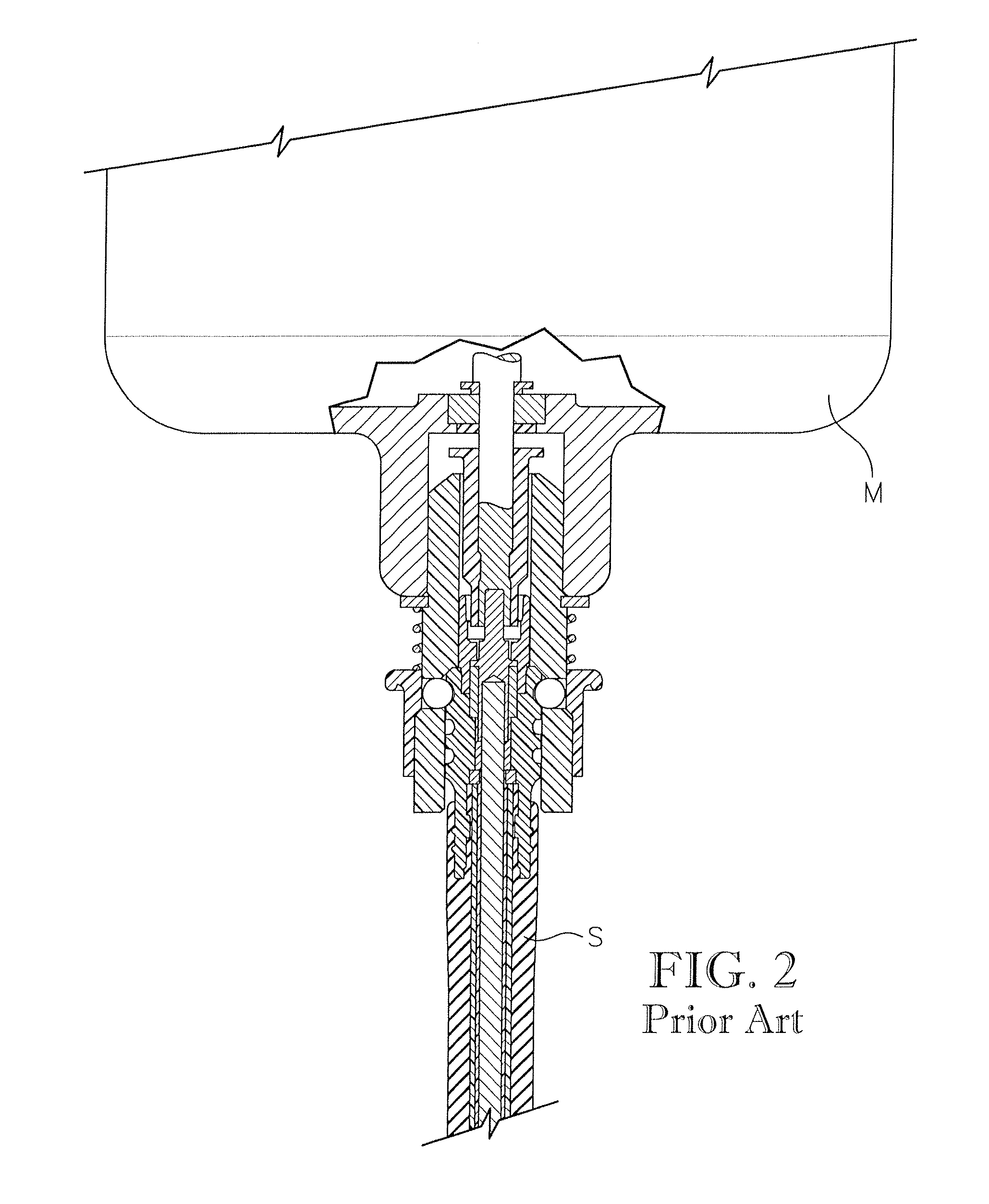Safety release for direct drive of rotary knife
a safety release and rotary knife technology, applied in the direction of couplings, manufacturing tools, tableware, etc., can solve the problems of limiting the rotation of the annular blade within the knife housing, and affecting the safety of rotary knives
- Summary
- Abstract
- Description
- Claims
- Application Information
AI Technical Summary
Benefits of technology
Problems solved by technology
Method used
Image
Examples
Embodiment Construction
[0020]Turning initially to FIG. 3, a powered rotary knife assembly 20 is configured to be used in an animal slaughterhouse for dressing an animal carcass, although other knife applications are entirely within the ambit of the present invention. The rotary knife assembly 20 broadly includes a rotary knife 22, a flexible drive cable 24, a motor 26, and a safety coupling 28 that are drivingly connected to one another, with power being transmitted from the motor 26 to the rotary knife 22 by the drive cable 24 and safety coupling 28.
[0021]The rotary knife 22, depicted in FIG. 3, is a conventional rotary knife operable for trimming, boning, and cutting the animal carcass. The rotary knife 22 includes a handle 30, a blade housing 32, and a rotating annular blade 34. The handle 30 presents a front blade support end 36 and a rear connector end 38 that connects to the drive cable 24. The handle 30 further includes a transmission (not shown) with a transmission input end positioned adjacent th...
PUM
 Login to View More
Login to View More Abstract
Description
Claims
Application Information
 Login to View More
Login to View More - R&D
- Intellectual Property
- Life Sciences
- Materials
- Tech Scout
- Unparalleled Data Quality
- Higher Quality Content
- 60% Fewer Hallucinations
Browse by: Latest US Patents, China's latest patents, Technical Efficacy Thesaurus, Application Domain, Technology Topic, Popular Technical Reports.
© 2025 PatSnap. All rights reserved.Legal|Privacy policy|Modern Slavery Act Transparency Statement|Sitemap|About US| Contact US: help@patsnap.com



